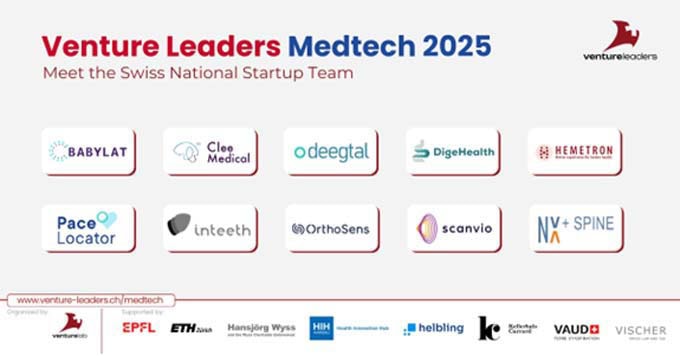We're not carmakers
What has proven itself many times over in industrial manufacturing is increasingly being used in the service sector as well: The methods and principles of lean management. For this purpose, the various lean instruments must be adapted to the specific needs of service providers and gradually anchored in a company.

Lean management is the world's most successful approach to process and quality management in industrial manufacturing. Starting with Taiichi Ono's "Toyota Production System", the approach has been extended to all industries with production and assembly processes since 1950. Since then, numerous operational excellence programs have proven that the consistent application of lean management can achieve sustainable increases in quality and efficiency while simultaneously increasing customer and employee satisfaction.
Industrialization of service processes
The popular lean tools such as value stream mapping, visual management, 5S, standardization, kanban, one piece flow and kaizen - to name just a few of the most important - have recently been successfully applied to service processes. For example, the lean principles that have proven effective in automotive manufacturing are just as effective in efficiently selling, financing or repairing cars, or managing entire fleets of cars. As a result, the efficiency spark has spread to the pure services industry. In the Swiss financial sector, for example, UBS, Helsana or the Six Group are using standardization, automation and outsourcing with
Waste in service
Lean management methods intensively. They are not alone in this. The current Lean Services Report by Allied Consultants Europe (ACE) confirms the relevance of the method. The more than 700 European service companies surveyed indicated three fields of action as their greatest challenges for efficiency gains:
- Customer orientation: Real value creation for effectively understood customer needs
- Value stream orientation: Aligning the organization with end-to-end processes
- Continuous improvement: permanent optimization as a management task.
Translation to the service industry
The success of the lean approach lies in continuously examining customer services and all the end-to-end processes (value streams) responsible for them for inefficiencies and freeing them from these. This is done by searching for the 7 wastes that are hidden in service processes as well as in production processes. In service processes, however, they are usually more difficult to recognize and therefore more difficult to avoid. With the following exemplary questions you can estimate the potential in your service processes more easily:
- Overproduction: How many words, lines or documents end up in the digital or physical wastepaper basket every day, and how many meetings are wasted due to a lack of meeting management or the wrong participants?
- Waiting time: How often do you wait for communication, decision-making or meeting partners or for information in order to continue your work in a targeted manner?
- Movement: How often do you search for information, get interrupted in concentrated work, have to get back into old dossiers or "travel" far to a meeting?
Effective instruments
- Overprocessing: How many unnecessary steps do you perform due to missing forms, copy-paste templates, or poorly configured IT tools?
- Warehouse: How many inquiries or dossiers from yesterday lie on your desk and how many projects take longer than three months before the first benefit for the company becomes visible?
- Transport: Are there still paper dossiers in your company that serve as a collection of pending items, are passed on or physically stored?
- Defects/errors: How often in your process is a query started or an error only detected by a subsequent unit?
Converted into service processes
Only if you could answer all questions with "none " or "never", you can assume that Lean Management has little or no potential in your organization. However, if you have identified waste, the question arises as to which operational instruments can be used to combat it economically and sustainably. With slight adjustments, the lean management tools that have proven effective in industrial manufacturing are also effective in service processes. For example:
- Analyze and optimize comprehensive end-to-end processes to increase customer value while reducing interfaces, throughput times and process times (value stream mapping)
- Visualize processes, team performance, and behavioral norms to better communicate and manage processes.
- Use Kanban principles to reduce the number of open tasks and decrease lead times
TargetedAdaption
- Implement the 5S rules of order to keep IT filing cabinets, team mailboxes, office desks or shared filing cabinets and work surfaces clean, clear, consistent and complete.
- Questioning of all collective processes and batch processing in the company and introduction of the flow principle to promote individual processing.
- Methodical empowerment of employees to autonomously implement improvements by means of Kaizen in quality teams.
An important Kaizen principle is applied to all instruments: do not look for perfect solutions, but for quick and simple ones.
Successful introduction
In order to develop the effect of lean management at service providers and to do justice to the peculiarities of the sector, a maturity model with targeted adaptation of the lean instruments has proven itself. In a company, the different areas and process groups can have different levels of maturity and, accordingly, instruments of different levels can be used in parallel. (Graphic 1)
Stage 1 - Ensuring a stable basis: Optimization should only begin when there is fundamental control over the business processes and they are sufficiently stable. Proven instruments for this are visual performance management, standardization, order and cleanliness with 5S and value stream mapping.
Stage 2 - Optimizations by employees: On the stable basis created, the actual state can be systematically improved with instruments such as smoothing the workload, the flow principle, dojo training and quality teams.
Stage 3 - Continuous improvement: In the final stage, ongoing improvement of processes ensures the results achieved. Kaizen logic, extended employee competence matrix, first-time-right quality and selective Six Sigma optimizations have proven successful for this purpose.
All three stages are supported by a targeted leadership program. Leaders are trained in Lean principles so that their common "improvement language" supports a standardized approach to optimization. An objective, tightly-timed performance visualization is developed with the cadre for the teams, and team leaders are trained in problem-solving tools, change methods, and lean thinking. In the final stage, the alignment of all measures with the overall company efficiency is ensured and the continuous improvement flows into the individual goals (MBO) of all managers and employees.
Success stories from the field
Two recent examples from the insurance and healthcare sectors demonstrate the success and effectiveness of lean services: The challenges of a well-known health insurance company were to reverse the cost trend, increase customer loyalty, and focus managers' attention more on managing operational service delivery. With a transparent performance dialogue and daily speedometer visualizations at team level (example: new dossiers, closed dossiers, backlog), day-to-day readiness was achieved in a first step and the necessary basic stability in the processes was ensured. Based on this, the management was trained in lean methods and the optimization of the most important processes was realized by means of value stream analyses. In the final step, a continuous improvement process was established, with regular Kaizen meetings and Blitz Kaizen workshops. The performance of the insurance company improved significantly within three years. The result was an 80 percent reduction in the average processing time for dossiers, a 51 percent increase in process productivity and a 26 percent increase in employee satisfaction.
One acute care hospital faced similar challenges: Stabilizing operational cost increases in the face of healthcare cost-cutting pressures, increasing patient satisfaction, and reducing staff turnover. Using "industrial logic", patient pathways from admission to discharge were identified and optimized. Value stream and activity analyses made wastage visible and promoted the willingness of employees to change. Productivity potentials were released by means of the flow principle and smoothing of workload peaks. Finally, lean thinking and action with standardization, 5S and visual performance management were anchored in the hospital staff. Today, more than 40 Kaizen teams throughout the hospital are responsible for continuous improvement. Within two years, unproductive activities have been reduced by 30 percent, direct work on patients has been increased by 30 minutes per day per nurse, and nursing overtime of CHF 1.2 million per year has been eliminated.
Conclusion
Insurance customers and patients undoubtedly don't see themselves as vehicles on an assembly line. And service providers definitely don't build cars. But lean management also leads to higher service quality, more efficient use of resources and higher productivity in the service sector, while at the same time reducing operating costs. The decisive factor here is that the lean instruments are adapted to the specific needs of service providers, that they are introduced in several stages in line with the situation, and that they are subsequently anchored in a sustainable manner - and ultimately that the changes focus on the employees and create sustainable efficiency with them.









